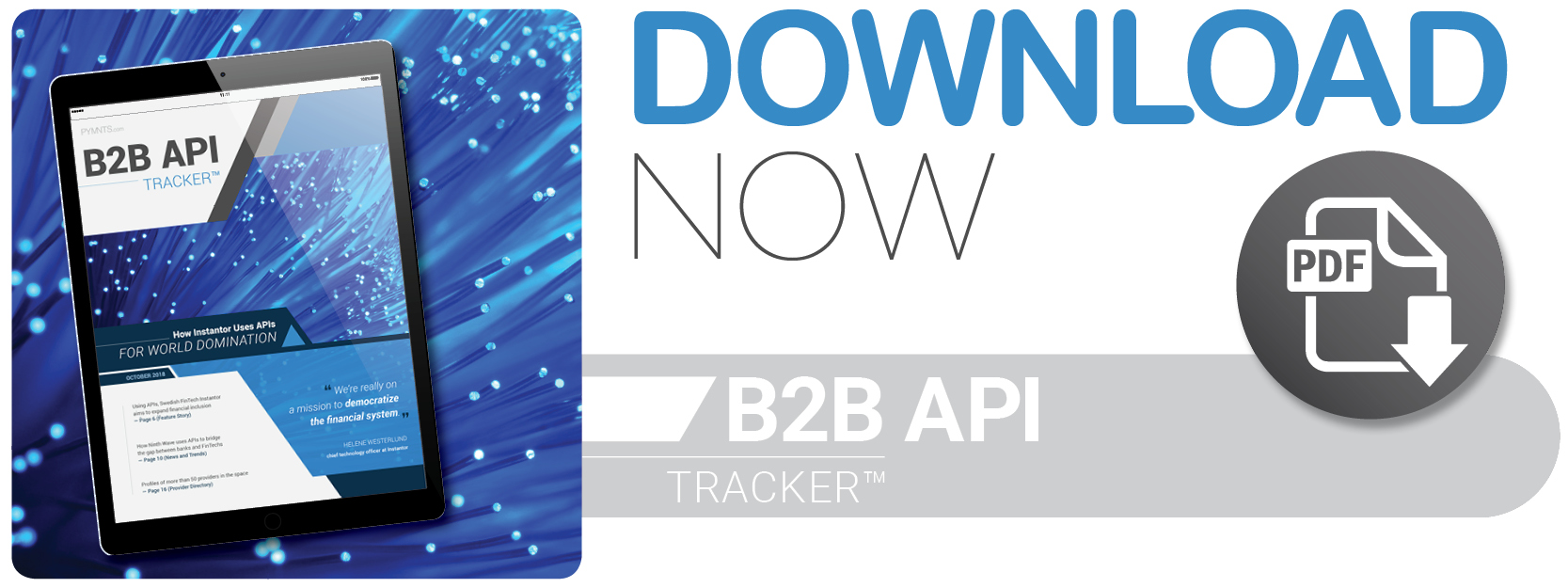
Old-school FIs typically rely on outdated consumer data from credit bureaus to review a consumer’s financial viability. However, APIs can help FIs review transactional bank data to generate a more accurate consumer financial health picture, reducing the potential for issuing risky loans. In October’s B2B API Tracker, Helene Westerlund, CTO of Swedish FinTech Instantor, discusses how APIs are helping to promote financial inclusion worldwide and equalize access to credit.

APIs are being used across the financial landscape to help traditional banks and FinTechs deliver products to a wider audience, including underbanked populations. This means developers can tap them to extend financial benefits to users on a global scale.
That’s Swedish FinTech Instantor’s aim. The company’s Bank API streamlines common financial processes, including loan applications, to help banks make faster and more informed decisions. According to Chief Technology Officer Helene Westerlund, it plans to use the solution to expand its worldwide financial services reach and help underbanked populations realize the benefits of digital financial tools.
“We’re really on a mission to democratize the financial system,” Westerlund told PYMNTS.
Delivering a More Accurate Financial Profile
Instantor’s Bank API offers banks a more updated method of reviewing credit information for loan applicants. Banks in Sweden typically rely on a review process that requires the collection of salary information from credit bureaus. This data is often outdated, however, and based on salaries that are at least a year-and-a-half old. As a result, it presents an incomplete profile of a borrower’s financial state.
Instantor looked to address this payment pain point through an API that would provide banks and lenders with a more accurate picture. Its solution quickly reviews transactional banking data to obtain a more accurate view of how much of the funds borrowers have available to them.
“If [a bank] analyzes the financial capabilities of someone, [it wants] as low a risk as possible,” Westerlund said.
Using an API, banks can also access relevant information and onboard loan applicants quickly, without having to manually enter information or review physical copies of driver’s licenses, bank statements or other personal data. They can also quickly verify an applicant’s identity and most current employer.
Faster access to more accurate data could help improve the borrowing process and allow even more applicants access to capital, Westerlund said.
Lending the Underbanked a Helping Hand
Instantor’s latest goal lies in improving access to financial resources, and it is currently looking to use its API to help more people around the world gain access to financial services.
According to the latest figures from The World Bank, roughly 1.7 billion adults worldwide lack access to digital financial services. The same report also noted that two-thirds of those adults have access to a mobile phone, which could be used to access those services. Instantor will use its API to improve said services’ reach.
The company announced in early September that its Bank API is now available to developers as part of its World Domination Starter Kit (WDSK) initiative. Instantor will offer developers at smaller startups access to transactional data from more than 300 banks in two dozen-plus countries. Developers can use the API to quickly scale solutions, digitize onboarding processes and extend financial inclusion beyond users in their countries of origin.
WDSK promotes and expands worldwide financial services to underbanked populations by making Instantor’s API available to FinTechs on a global scale. This will ease FinTechs’ access to transactional banking data and enable them to use it to build new services.
“What we’re doing is making our Bank API available to smaller startups that don’t have the relevant power to make those integrations,” Westerlund said. “What we’re hoping is that by making it available to smaller startups, financial services will become even more accessible to the underbanked.”
Banks in new global markets can use the API to perform a thorough review of a borrower’s financial profile and determine whether he or she is eligible for a short-term loan. APIs mean banks could also gain access to transactional banking data — rather than relying exclusively on credit bureau information — and might be convinced to offer loans to candidates they otherwise would have passed over.
“They can check their financial capacity, and hopefully they can see if this was a good customer for them,” Westerlund explained.
Helping FIs Make Smarter Financial Decisions
In addition to Instantor’s own initiative, the EU’s Revised Payment Services Directive (PSD2) and open banking are adding to investments in financial API solutions. These movements have led to an increase in the number of individuals taking ownership of their data.
“It makes me the owner of the data,” Westerlund said. “I am able to share the data with anyone I want to share it with.”
The rise of API-based investments is making financial data available to banks and FinTechs, too. As it becomes available, though, these institutions will be forced to confront an important question: Now what?
“It’s not just the access to data that is of great value,” Westerlund said. “The power is really in what you do with the data.”
Instantor is hoping to help more populations access tools — which could prove to be the first step in democratizing financial services — through access to a wider range of financial data. By making tools and services more widely available worldwide, APIs could play a significant role in bringing new players into the global financial system and empowering bank consumers worldwide to control their financial destinies.